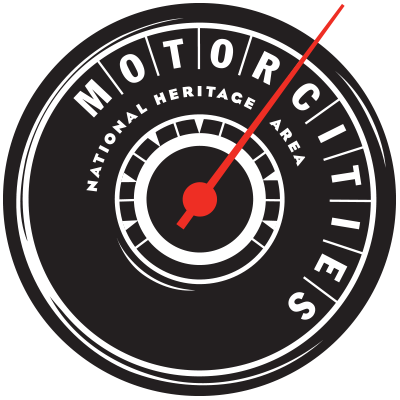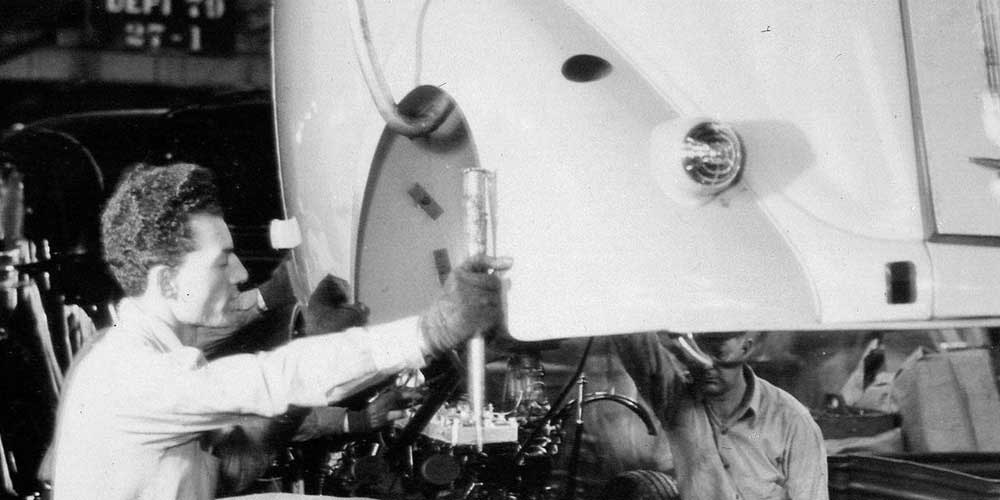By Robert Tate Award Winning Automotive Historian/Researcher.
Published 11.26.2025
Images courtesy of Robert Tate’s Automotive History Collection.
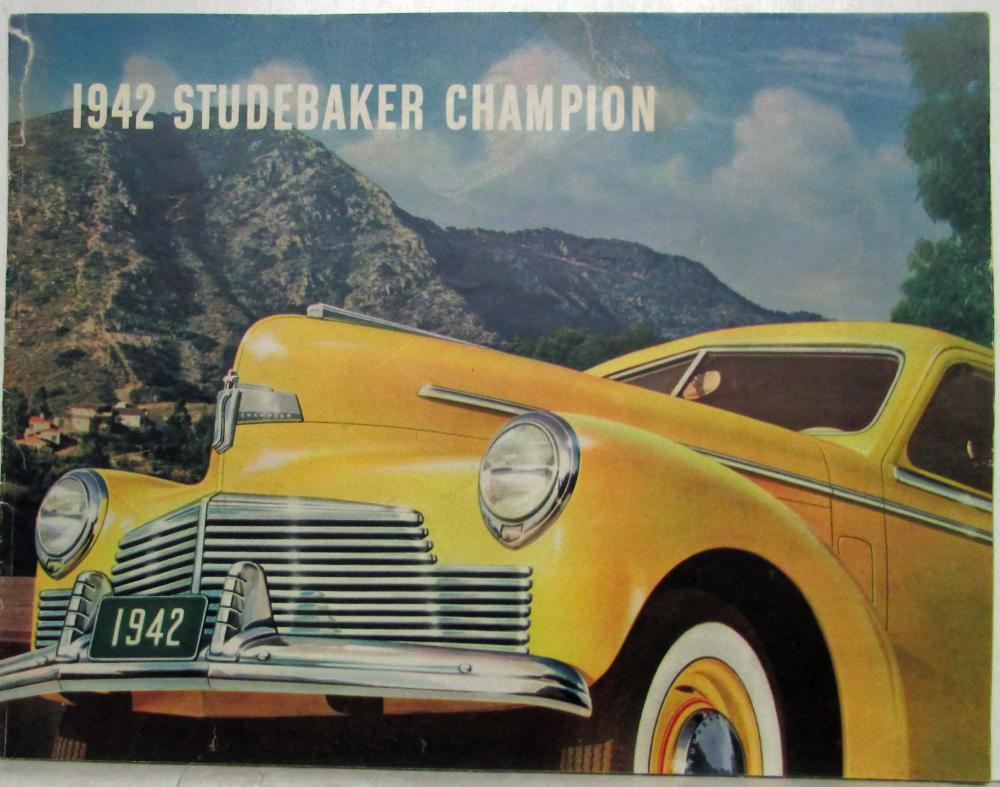 Front end of 1942 Studebaker in yellow.
Front end of 1942 Studebaker in yellow.
 1942 Studebaker model in Green Champion.
1942 Studebaker model in Green Champion.
In 1942, Americans were turning their attention to the war effort. Before Studebaker’s assembly lines shut down for the duration in February, the company had already shifted its focus entirely to winning the war. On January 31, 1942, production of civilian automobiles ceased, and Studebaker transitioned fully to military manufacturing.
The 1942 Studebaker models—introduced in the fall of 1941—were designed under the direction of Raymond Loewy Studios by Bob Bourke (1916–1996) and Virgil Exner (1909–1973), who later joined Chrysler in the 1950s. These models included the Champion, Commander, and President series, offered as three-passenger and five-passenger coupes, a Club Sedan, and a four-door Cruising Sedan. The most expensive model, the Skyway Land Cruiser sedan, sold for $1,340 and featured fender-mounted directional signals, fender skirts, and whitewall tires. At the other end of the spectrum, a three-passenger Custom Coupe cost $785. The Champion series proved the most popular among consumers.
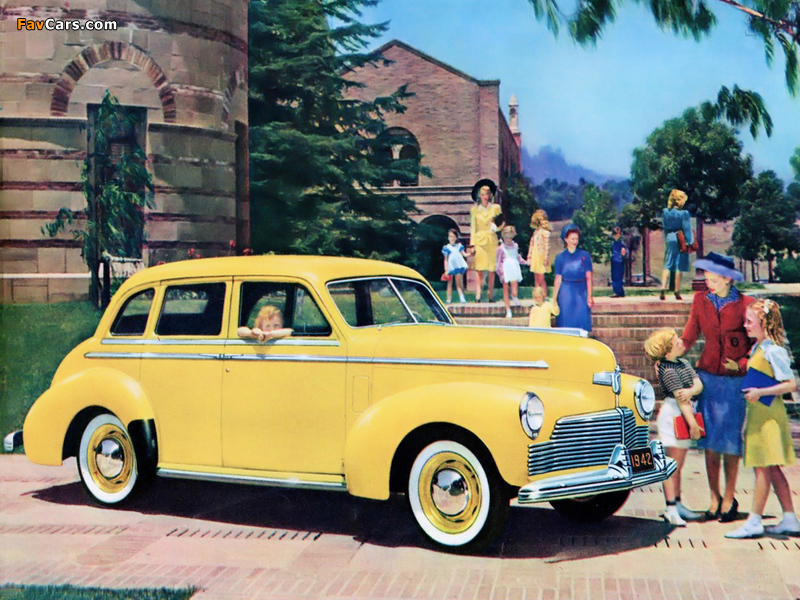 1942 Studebaker Yellow Sedan
1942 Studebaker Yellow Sedan

Studebaker produced only 9,285 cars in 1942, placing the company eighth in national automobile sales. Prices rose by about $100 per model due to material shortages and wartime inflation. Chrome trim was replaced with painted parts as certain metals became strategic materials, leading many automotive historians, including me, to refer to the 1942 models as “Blackout” vehicles due to the lack of chrome/brightwork on the exterior design. Mention also should be made of the notable introduction of the Turbo-Matic Drive, a fluid-drive transmission.
After Pearl Harbor, the federal government ordered all automakers into full war production. By February 1942, Studebaker’s South Bend, Indiana plant was entirely devoted to government contracts. The workforce nearly doubled to 20,000 men and women to meet wartime demands. Advertising from the era often featured Studebaker cars alongside military personnel, reflecting the patriotic spirit of the time.
Though produced in limited numbers, the 1942 Studebaker models marked a significant milestone in the company’s history—a final chapter before the factory turned its attention to supporting America’s victory in World War II.
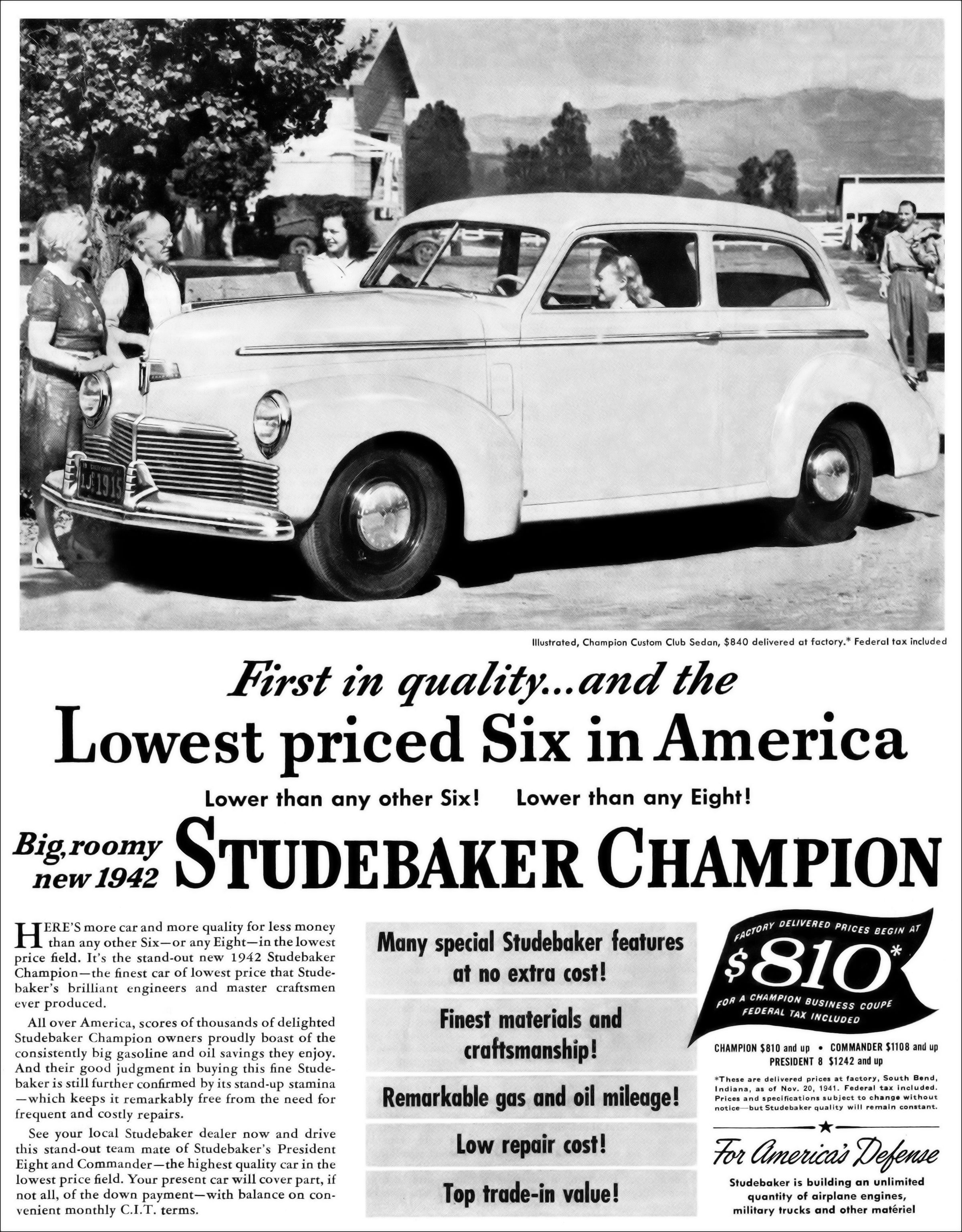 1942 Studebaker Ad
1942 Studebaker Ad
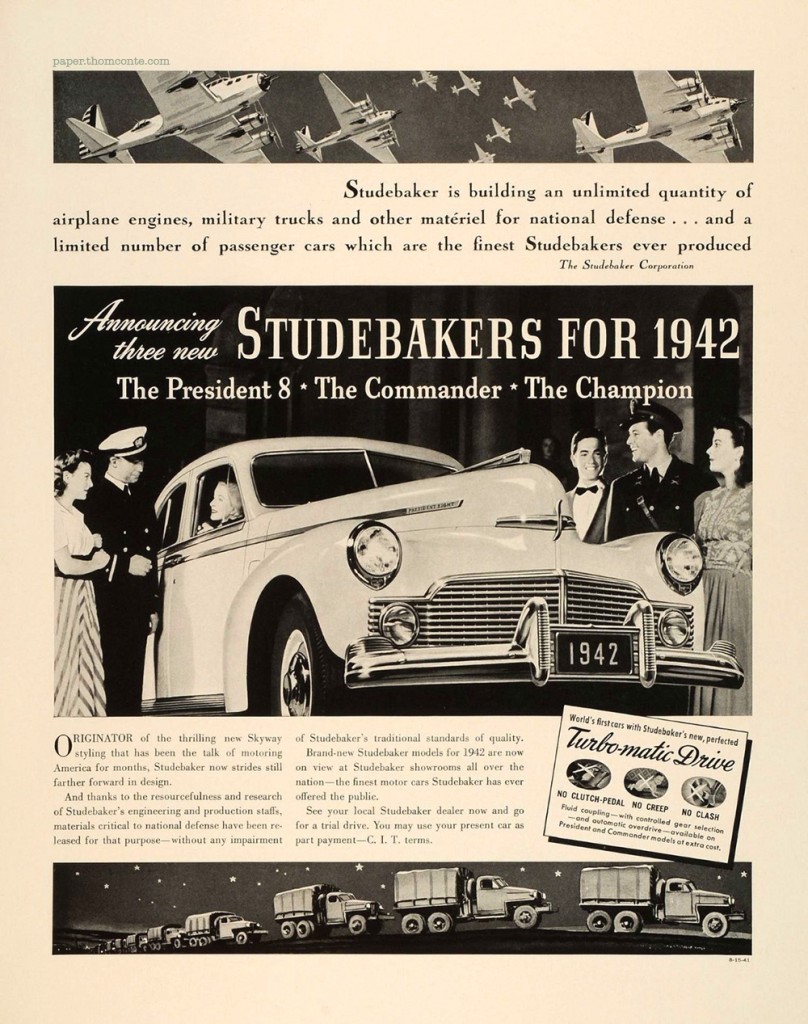 Studebakers for 1942
Studebakers for 1942
Bibliography
Foster Patrick. “Studebaker The Complete History” MBI Publishing Company 2008.
Moloney H. James. “Studebaker Cars” Motorbooks International Publishers 1994.
Hall E. Asa & Langworth M. Richard. “The Studebaker Century A National Heritage” Dragonwyck Publishing Inc. 1983.
